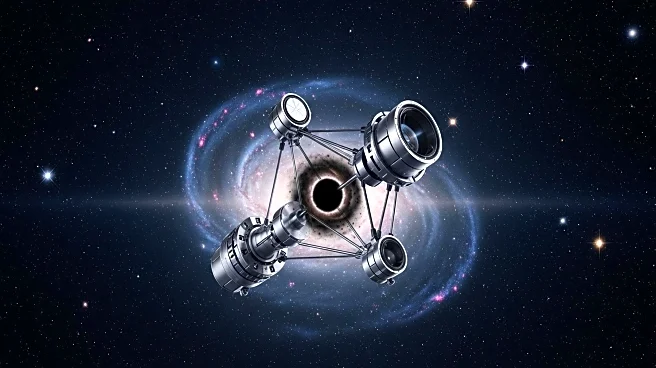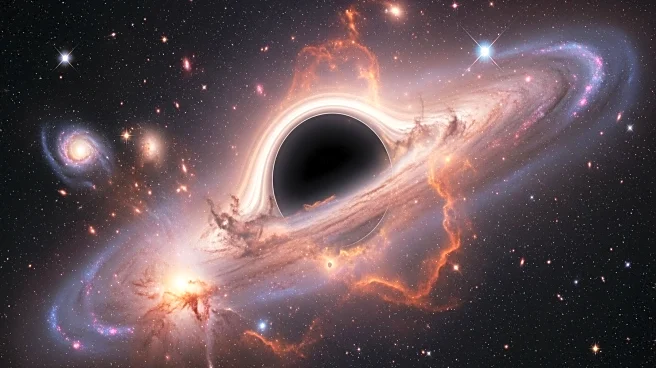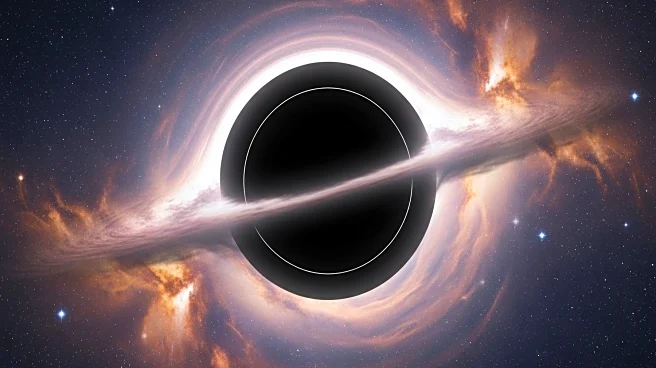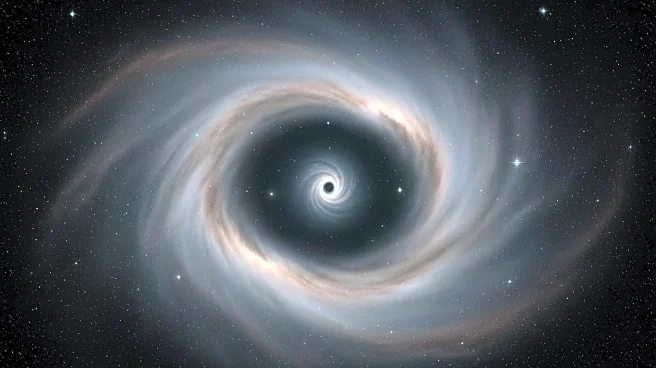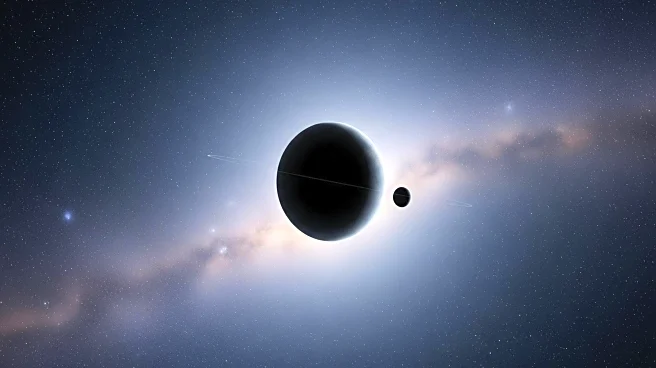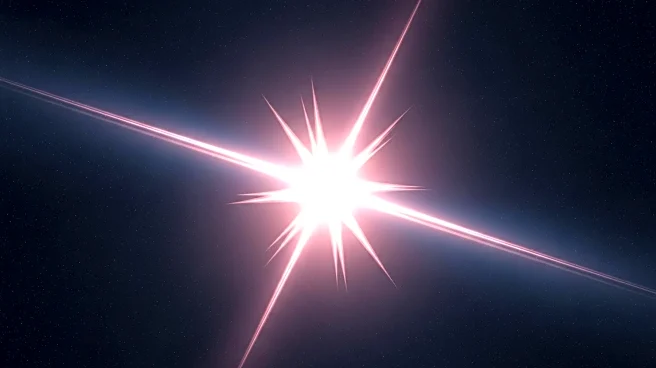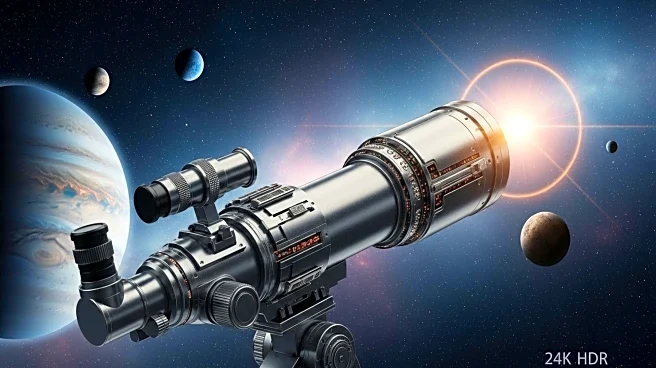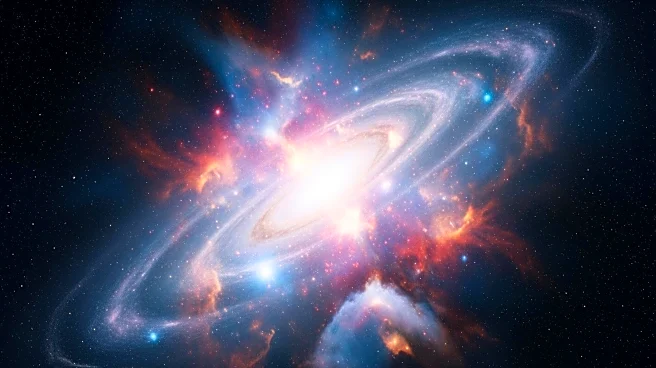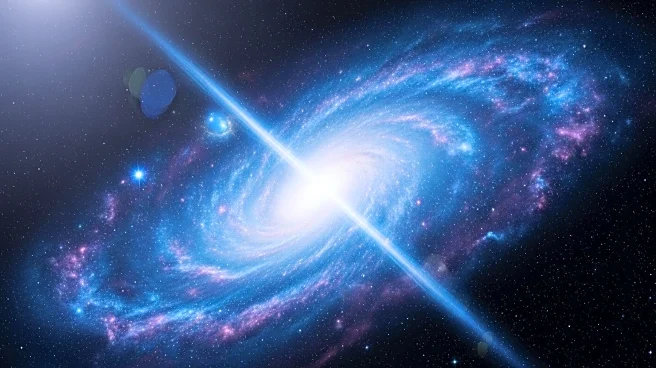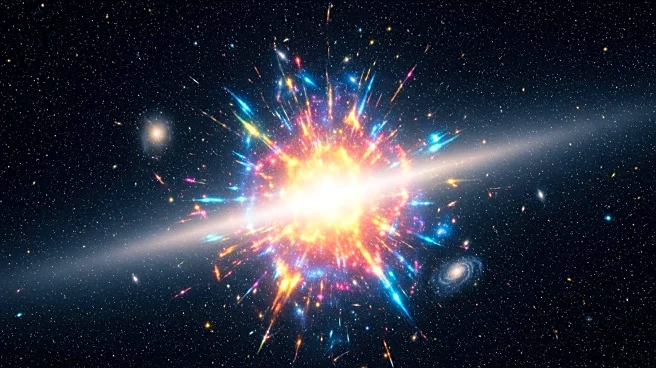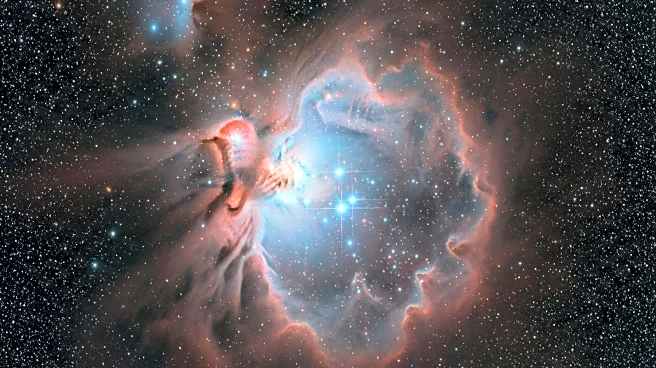What's Happening?
The James Webb Space Telescope (JWST) has identified mysterious 'red dots' in the early universe, which may represent a new class of celestial objects known as 'black hole stars.' These objects are hypothesized to be massive spheres of cold gas powered by supermassive black holes, emitting light as matter is rapidly accreted. This discovery challenges previous understandings of galaxy formation, as these objects were initially thought to be mature galaxies. The research, involving an international team including Penn State scientists, suggests these 'black hole stars' could be an early phase in black hole and galaxy evolution.
Why It's Important?
The identification of 'black hole stars' could significantly alter the current understanding of the early universe and the formation of galaxies. If confirmed, these objects may represent a critical phase in the development of supermassive black holes, which are central to most galaxies. This discovery could provide insights into the processes that led to the formation of the universe as it is known today, potentially impacting theories in astrophysics and cosmology. The findings could also influence future research directions and the development of new models to explain the evolution of the universe.
What's Next?
Further research is needed to confirm the nature of these 'red dots' and to understand their role in the early universe. The team plans to conduct additional studies to test their hypothesis by examining the density of gas and the strength of these early black hole stars. This ongoing research could lead to new insights into the formation and evolution of galaxies and black holes, potentially reshaping current astrophysical models.
